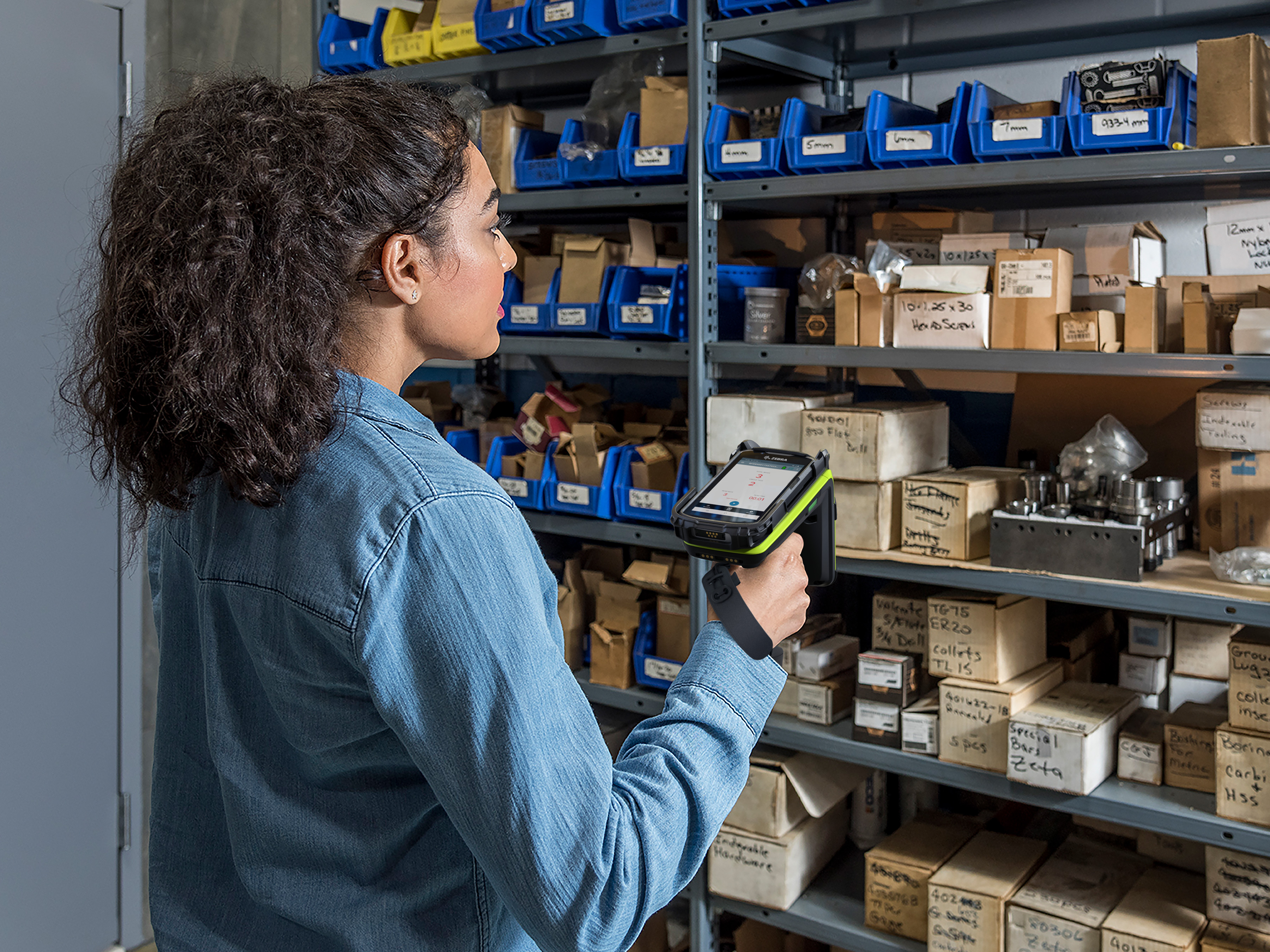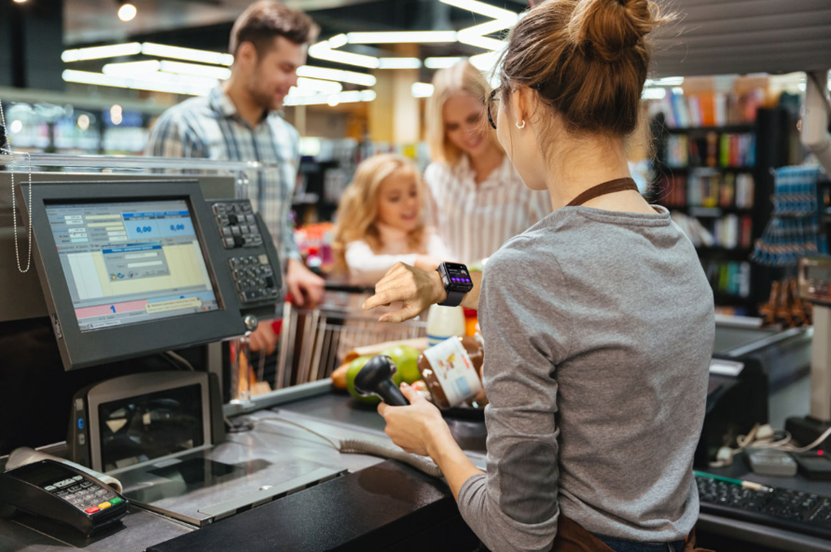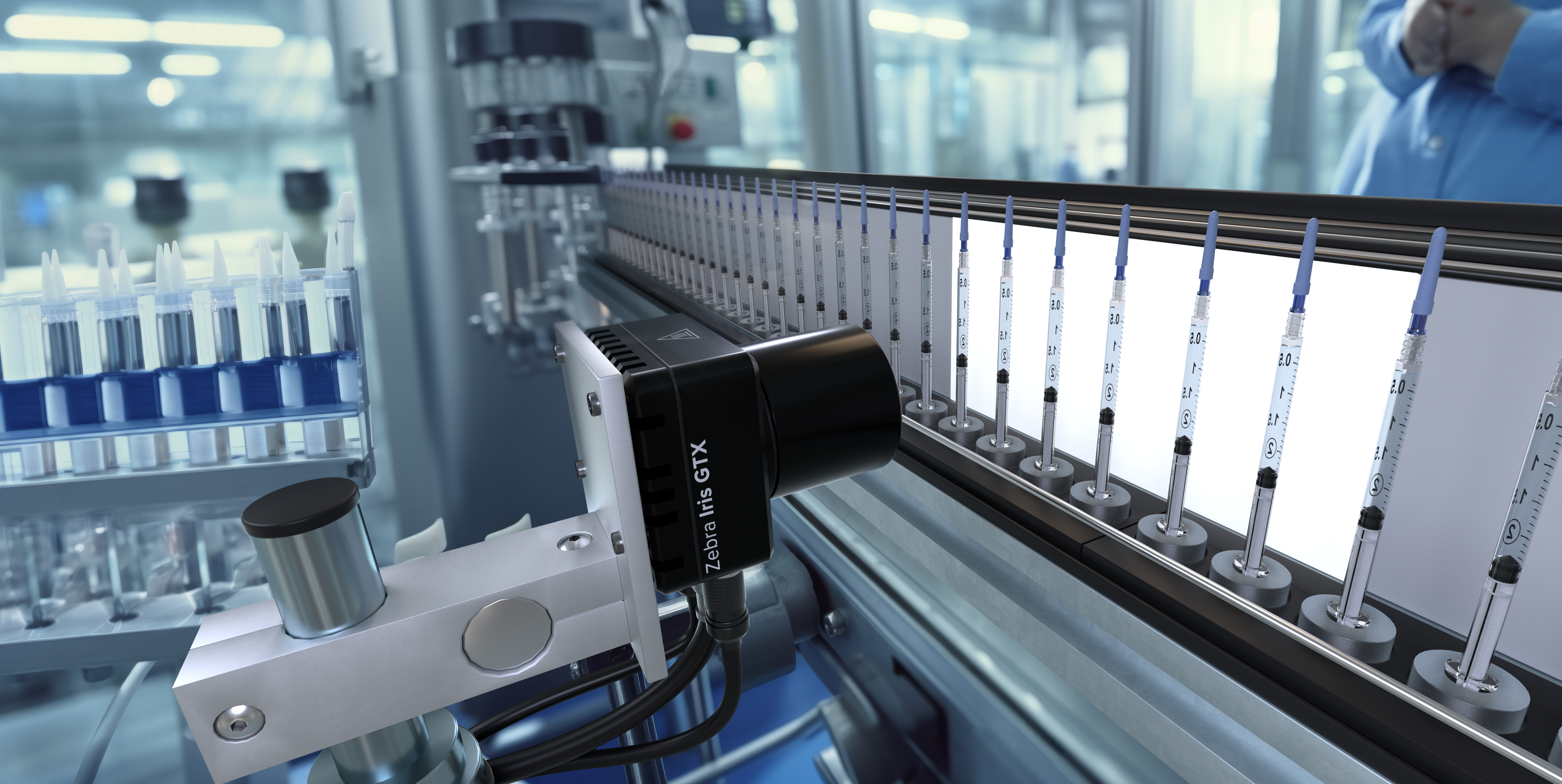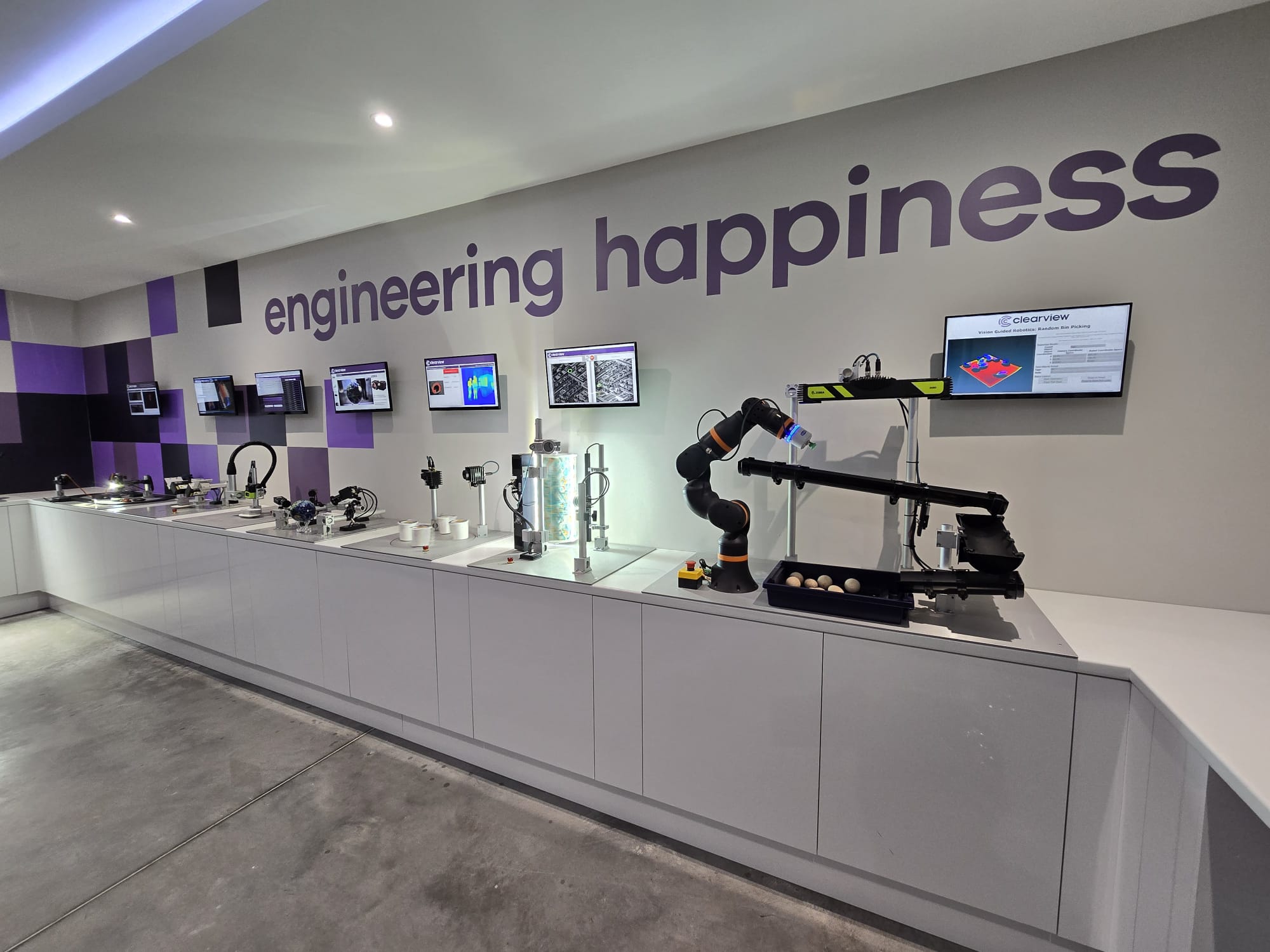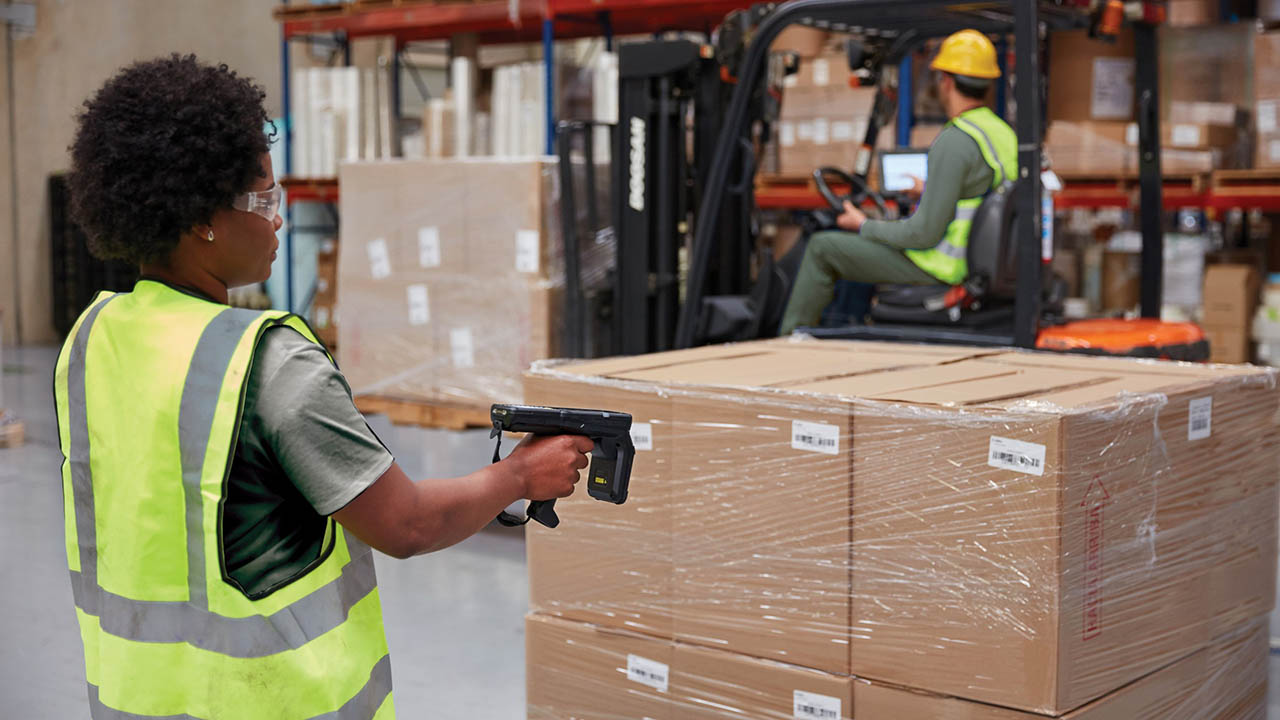Transform retail operations with Zebra’s retail technology solutions, featuring hardware and software for improving inventory management and empowering teams.
Streamline operations with Zebra’s healthcare technology solutions, featuring hardware and software to improve staff collaboration and optimize workflows.
Enhance processes with Zebra’s manufacturing technology solutions, featuring hardware and software for automation, data analysis, and factory connectivity.
Zebra’s transportation and logistics technology solutions feature hardware and software for enhancing route planning, visibility, and automating processes.
Learn how Zebra's public sector technology solutions empower state and local governments to improve efficiency with asset tracking and data capture devices.
Zebra's hospitality technology solutions equip your hotel and restaurant staff to deliver superior customer and guest service through inventory tracking and more.
Zebra's market-leading solutions and products improve customer satisfaction with a lower cost per interaction by keeping service representatives connected with colleagues, customers, management and the tools they use to satisfy customers across the supply chain.
Empower your field workers with purpose-driven mobile technology solutions to help them capture and share critical data in any environment.
Zebra's range of Banking technology solutions enables banks to minimize costs and to increase revenue throughout their branch network. Learn more.
Zebra's range of mobile computers equip your workforce with the devices they need from handhelds and tablets to wearables and vehicle-mounted computers.
Zebra's desktop, mobile, industrial, and portable printers for barcode labels, receipts, RFID tags and cards give you smarter ways to track and manage assets.
Zebra's 1D and 2D corded and cordless barcode scanners anticipate any scanning challenge in a variety of environments, whether retail, healthcare, T&L or manufacturing.
Zebra's extensive range of RAIN RFID readers, antennas, and printers give you consistent and accurate tracking.
Choose Zebra's reliable barcode, RFID and card supplies carefully selected to ensure high performance, print quality, durability and readability.
Zebra's location technologies provide real-time tracking for your organization to better manage and optimize your critical assets and create more efficient workflows.
Zebra's rugged tablets and 2-in-1 laptops are thin and lightweight, yet rugged to work wherever you do on familiar and easy-to-use Windows or Android OS.
With Zebra's family of fixed industrial scanners and machine vision technologies, you can tailor your solutions to your environment and applications.
Zebra’s line of kiosks can meet any self-service or digital signage need, from checking prices and stock on an in-aisle store kiosk to fully-featured kiosks that can be deployed on the wall, counter, desktop or floor in a retail store, hotel, airport check-in gate, physician’s office, local government office and more.
Adapt to market shifts, enhance worker productivity and secure long-term growth with AMRs. Deploy, redeploy and optimize autonomous mobile robots with ease.
Discover Zebra’s range of accessories from chargers, communication cables to cases to help you customize your mobile device for optimal efficiency.
Zebra's environmental sensors monitor temperature-sensitive products, offering data insights on environmental conditions across industry applications.
Enhance frontline operations with Zebra’s AI software solutions, which optimize workflows, streamline processes, and simplify tasks for improved business outcomes.
Zebra Workcloud, enterprise software solutions boost efficiency, cut costs, improve inventory management, simplify communication and optimize resources.
Keep labor costs low, your talent happy and your organization compliant. Create an agile operation that can navigate unexpected schedule changes and customer demand to drive sales, satisfy customers and improve your bottom line.
Drive successful enterprise collaboration with prioritized task notifications and improved communication capabilities for easier team collaboration.
Get full visibility of your inventory and automatically pinpoint leaks across all channels.
Reduce uncertainty when you anticipate market volatility. Predict, plan and stay agile to align inventory with shifting demand.
Drive down costs while driving up employee, security, and network performance with software designed to enhance Zebra's wireless infrastructure and mobile solutions.
Explore Zebra’s printer software to integrate, manage and monitor printers easily, maximizing IT resources and minimizing down time.
Make the most of every stage of your scanning journey from deployment to optimization. Zebra's barcode scanner software lets you keep devices current and adapt them to your business needs for a stronger ROI across the full lifecycle.
RFID development, demonstration and production software and utilities help you build and manage your RFID deployments more efficiently.
RFID development, demonstration and production software and utilities help you build and manage your RFID deployments more efficiently.
Zebra DNA is the industry’s broadest suite of enterprise software that delivers an ideal experience for all during the entire lifetime of every Zebra device.
Advance your digital transformation and execute your strategic plans with the help of the right location and tracking technology.
Boost warehouse and manufacturing operations with Symmetry, an AMR software for fleet management of Autonomous Mobile Robots and streamlined automation workflows.
The Zebra Aurora suite of machine vision software enables users to solve their track-and-trace, vision inspection and industrial automation needs.
Zebra Aurora Focus brings a new level of simplicity to controlling enterprise-wide manufacturing and logistics automation solutions. With this powerful interface, it’s easy to set up, deploy and run Zebra’s Fixed Industrial Scanners and Machine Vision Smart Cameras, eliminating the need for different tools and reducing training and deployment time.
Aurora Imaging Library™, formerly Matrox Imaging Library, machine-vision software development kit (SDK) has a deep collection of tools for image capture, processing, analysis, annotation, display, and archiving. Code-level customization starts here.
Aurora Design Assistant™, formerly Matrox Design Assistant, integrated development environment (IDE) is a flowchart-based platform for building machine vision applications, with templates to speed up development and bring solutions online quicker.
Designed for experienced programmers proficient in vision applications, Aurora Vision Library provides the same sophisticated functionality as our Aurora Vision Studio software but presented in programming language.
Aurora Vision Studio, an image processing software for machine & computer vision engineers, allows quick creation, integration & monitoring of powerful OEM vision applications.
Adding innovative tech is critical to your success, but it can be complex and disruptive. Professional Services help you accelerate adoption, and maximize productivity without affecting your workflows, business processes and finances.
Zebra's Managed Service delivers worry-free device management to ensure ultimate uptime for your Zebra Mobile Computers and Printers via dedicated experts.
Find ways you can contact Zebra Technologies’ Support, including Email and Chat, ask a technical question or initiate a Repair Request.
Zebra's Circular Economy Program helps you manage today’s challenges and plan for tomorrow with smart solutions that are good for your budget and the environment.
The Zebra Knowledge Center provides learning expertise that can be tailored to meet the specific needs of your environment.
Zebra has a wide variety of courses to train you and your staff, ranging from scheduled sessions to remote offerings as well as custom tailored to your specific needs.
Build your reputation with Zebra's certification offerings. Zebra offers a variety of options that can help you progress your career path forward.
Build your reputation with Zebra's certification offerings. Zebra offers a variety of options that can help you progress your career path forward.

Quick Service, Smart Solutions: How You Can Use RAIN RFID to Optimize Your QSR Operations
The faster your store teams can process inbound goods and get ingredients, supplies, and other items put away, the faster they can turn their attention back to revenue-generating activities, like serving guests.
As the pandemic continues to recede from the rear-view mirror and people return to their busy day-to-day routines, you’ve probably spent a large chunk of time considering what changes you need to make in your quick-service restaurants (QSRs) to meet customers’ expectations. I would imagine you’re looking every day at how you can use new technologies and improve operational processes to help your team work more effectively, deliver better customer experiences, and strengthen brand loyalty despite the ongoing supply chain issues and continued labor shortages.
And I imagine you’ve placed a renewed focus on backend operations, as many other QSR owners and managers have. By making employees more effective, reducing waste, and saving time behind the scenes, you can increase overall efficiency and, in turn, free up resources that help make the customer-facing part of your business run better. But one thing I’m noticing in speaking with many QSR leaders is that RAIN RFID technology isn’t being fully leveraged quite yet. There are so many ways it can be used to facilitate process improvements and support your objectives beyond how you may be using it today.
RFID technology has been helping several QSRs reach their goals of speed and accuracy in backend processes, and the wave of RFID rollouts and success stories is building up as we speak. However, there are so many more potential applications that could have a significant impact on backend operations, especially the goods-receiving process.
How RFID Can Bring Speed and Accuracy to Goods Receiving
When QSR leaders are looking for backend operations that might benefit from extra attention and investment, I find the goods-receiving station is often at the top of the list. However, I am aware it’s not always feasible to hire a dedicated receiving team. So, your managers and front-of-store team members are most likely the ones who must shift to inspect, inventory, and shelve inbound orders, and that can create friction in the customer experience.
As a result, you’re probably dealing with a lot of complaints from store teams about how long receiving is taking and inaccurate inventory records – and how they’re impacting both the customer experience and the bottom line.
RFID technology offers a fast, efficient way to accurately process incoming deliveries so that your team can focus on what matters, which is fast, accurate order fulfillment and customer service.
RFID tags give each item a unique identity, so items can be tracked and traced at the case level as part of a real-time, serialized inventory system, including buns, napkins, bags, and cold-chain items like cases of meat, cheese, eggs, and produce. These tags – which often look like the barcode labels placed on items today – provide access to data attributes about each item, such as identifying information, origin, harvest or production dates, and expiration dates. In situations where these data attributes are stored directly on the RFID tag, a single “read” of the tag can tell your team everything they need to know to process the order. Better yet, that tag read can automatically input all this data into your inventory system so that your people don’t have to waste time manually extracting (i.e., reading) these details from the cases or shipping labels and manually inputting them into the system. The RFID reader will grab all the data from the RFID tag (i.e., label) and feed it into the system’s fields. All your receiving team will need to do is review and verify the information before proceeding to goods sorting and put away.
“Can’t I just use a barcode scanner to do the same thing?”
This question comes up quite often.
Technically you could. However, each label would have to be located and individually scanned, most likely by a person with a handheld barcode scanner. Though faster than having them manually type in all the item information, it’s still much slower than using RFID for receiving. That’s because the RFID reader doesn’t need a line of sight to the tag to communicate with it and extract data. A single RFID reader can communicate with a large number of tags at the same time and extract data at an extremely high speed. The average read rate for both fixed and handheld readers is now 1300+ tags per second, assuming you’re using a newer model.
Since the RFID readers are connected to enterprise software that provides a dashboard for viewing data and managing reader operation, you can make real-time data available to your entire team, including store managers and those working in the back-office or throughout the supply chain. Inventories remain accurate up to the minute, which helps the reorder process run more smoothly. The automated data capture also reduces your store team’s backend workload, giving team members more time with customers in the front of the house.
What Type of Reader is Best for QSR Receiving?
If you believe RFID could be beneficial to your QSR operation, one of the big questions you’ll need to answer is whether it’s better to go with:
- handheld RFID readers (so employees can carry them wherever they go to locate, process, and pull inventory or perform counts at various locations), or
- fixed reader infrastructure (which increases the scale of automation).
Then again, you may want a combination of the two. So, let’s consider the impact of both:
Handheld Readers Offer the Highest Flexibility
With a handheld reader, you carry the reader with you and wave it over cases on a pallet to capture data from the RFID tags attached to them. The reading distance can be up to six meters, but it’s usually better to start at a range of about 2-3 meters and then move in as needed.
The biggest advantage of handheld readers is flexibility. You can pack and stack goods in different ways and still get an accurate read, whether you’re dealing with products in dry storage or cold storage that are wrapped up on a pallet, stowed in a carton, or delivered as standalone items. Also, with a handheld reader, it’s easy to move around a stack of items and make sure you’ve captured everything, especially once you have the technique down for using a handheld reader.
You’ll just need to ensure you take steps to prevent false positive reads.
Because the reader has a relatively long operating distance, it’s possible to accidentally read RFID tags from boxes that aren’t part of the current shipment, but incidentally happen to be placed nearby. We often call that a “false positive read.”
To overcome this problem, well-designed software will need to be preloaded with the EPC codes of the delivery items that are meant for your restaurant location and belong to the shipment in progress using the electronic advanced shipment notice. This enables the intelligent RFID reader to search and register only the delivery items that belong to the shipment you’re trying to process. The right software will support your receiving process without making this too complex, guiding the receiver to achieve an accurate record of incoming goods.
Ensure the software gives the person using the RFID reader during goods receiving a clear view of read status so they will know if further reads are needed to cover any remaining items. It should also make it easier to recognize when items are really missing as you’ll be able to verify that every item in your possession has been processed.
Fixed-in-Place Readers Have the Highest Automation
With a fixed RFID reader, the mechanism for reading tags is mounted in a permanent location, convenient to the goods-receiving station, so items can be read as they’re being unloaded from the truck. There might, for example, be a reader with antennas placed in a doorway where the truck typically arrives. The read happens automatically when items (boxes, pallets, totes, etc.) pass through this doorway that has reader antennas mounted on the side, in the floor, or even overhead.
On the one hand, using fixed reader infrastructure means there’s significantly little need to train and remind employees to properly operate the RFID reader. There’s no human intervention needed (except for the occasional performance check and maintenance). On the other hand, there may be situations when a fixed reader may not be able to get a complete read on the first try, such as when a full pallet densely stacked with boxes passes by the reader. Those problems can be avoided by giving proper packing instructions and accurate instructions on where to position the RFID tags to your suppliers. You’ll also need to ensure proper reader antenna placement in your stores, which an RFID solution architect can help you with.
No Right or Wrong Answer
While handheld and fixed-in-place readers have their differences, the reality is that both approaches are compelling options for QSR operators. With a little advanced planning and proper hardware-software system design, all the items delivered to your stores can be swiftly and accurately processed using an RFID-facilitated receiving workflow. Your team doesn’t have to shoulder the burden anymore. They can still be involved, but in a more strategic way – and in a way that won’t create friction in the customer experience.
It may seem like a lot to get an RFID system online in your restaurants. However, there are plenty of people who can work with you and your team to design, install, and integrate these systems. They’ll work with you to understand your processes, your operational challenges, and your objectives. The goal is to improve upon your current processes – not necessarily reengineer them. The follow-up effect of those improvements can be far-reaching, yielding greater operational efficiency overall and more time available for customer-facing activities that create value and foster loyalty.
Finally, let me recommend you contact experienced companies in the RFID ecosystem that have helped QSRs improve goods receiving and other backend operations. Find out what they’re doing, what’s working well, and why it’s working well.
###
Editor’s Note:
We recommend you visit nxp.com/UCODE to find out more about how NXP’s UCODE integrated chips (ICs) are helping QSRs like yours streamline operations as part of more comprehensive RFID-facilitated processes.
###
Related Resource:
Zebra Developer Blog
Zebra Developer BlogZebra Developer Blog
Are you a Zebra Developer? Find more technical discussions on our Developer Portal blog.
Zebra Story Hub
Zebra Story HubZebra Story Hub
Looking for more expert insights? Visit the Zebra Story Hub for more interviews, news, and industry trend analysis.
Search the Blog
Search the BlogSearch the Blog
Use the below link to search all of our blog posts.
Most Recent
Legal Terms of Use Privacy Policy Supply Chain Transparency
ZEBRA and the stylized Zebra head are trademarks of Zebra Technologies Corp., registered in many jurisdictions worldwide. All other trademarks are the property of their respective owners. ©2025 Zebra Technologies Corp. and/or its affiliates.

